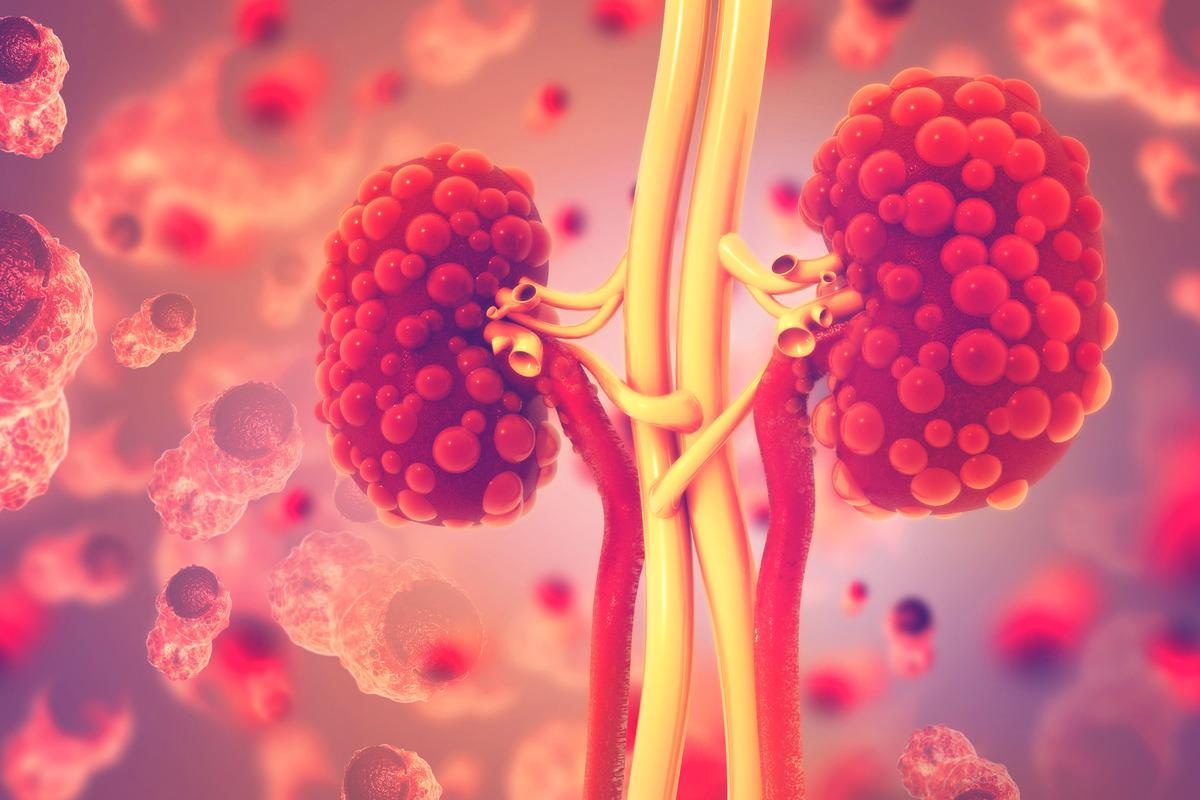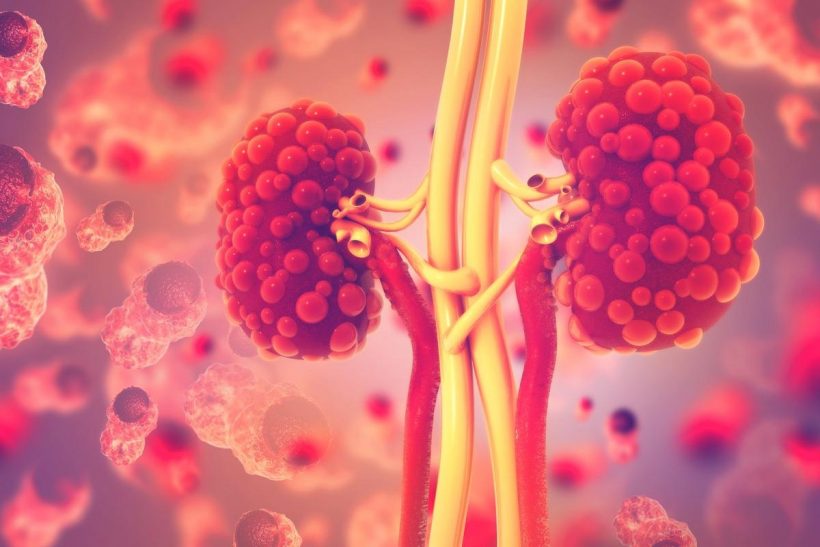In a recent study posted to the medRxiv* pre-print server, researchers demonstrated that plasma levels of leucine-rich repeat-containing 15 (LRRC15) are a strong indicator of the severity of coronavirus disease 2019 (COVID-19) in patients with end-stage kidney disease (ESKD).

A population-based study estimated a hazard ratio (HR) for the death of 3.69 in ESKD with COVID-19. Similarly, a European registry study reported mortality in 23.9% of dialysis patients with COVID-19. These studies, in part, demonstrated that ESKD patients are at heightened risk of progression to severe disease. Unfortunately, ESKD patients also exhibit an impaired response to COVID-19 vaccines, especially patients on hemodialysis.
Since these patients attend medical facilities for regular dialysis, they present a unique opportunity for serial blood sampling of both outpatients and in-patients with severe acute respiratory syndrome coronavirus 2 (SARS-CoV-2) infection.
About the study
In the present longitudinal analysis, researchers recruited ESKD hemodialysis patients with COVID-19 avoiding selection bias inherent in studies limited to hospitalized patients. The team collected blood samples at three-time points from the ESKD patients, viz., pre-infection stage, serially during SARS-CoV-2 infection, and after their complete clinical recovery. They performed plasma proteomics, RNA-sequencing, and flow cytometry (FC) of circulating proteins, such as cytokines and soluble receptors and immune cells, specifically peripheral blood mononuclear cells (PBMCs), for insights into the host response to SARS-CoV-2.
The researchers used the aptamer-based SomaScan platform for the broadest possible coverage of the plasma proteome constituted of 6,323 proteins. They linked the proteomic and transcriptomic data and cellular changes with circulating proteins and generated a comprehensive view of the COVID-19 multi-omic landscape.
Furthermore, the team used supervised learning to identify plasma levels of the LRRC15 protein, a recently proposed alternative receptor for SARS-CoV-2 and a key biomarker of COVID-19 severity.
Study findings
PBMC transcriptomic analysis identified numerous up-regulated pathways in ESKD patients with COVID-19, e.g., type 1 interferon signaling, genes reflecting leukocyte-vascular interactions, and the complement cascade.
Other up-regulated pathways included polo-like kinase (PLK)-mediated events crucial for facilitating the growth phase 2 (G2)/mitosis (M) transition, Golgi-cisternae peri-centriolar stack re-organization that occurs during M, reflecting the extensive cell division of immunocytes during COVID-19.
The longitudinal profiling revealed that LRRC15 levels remained stable in those with a mild clinical course but decreased temporally in severe illness. Transcriptomic and proteomic analyses showed elevation in other markers of COVID-19 severity, such as histone-encoding genes and elevated plasma histone. Histones package the newly replicated deoxyribonucleic acid (DNA) strands and are constituents of neutrophil extracellular traps (NETs), which contribute to tissue injury in severe COVID-19.
While their excess in cells could trigger chromatin aggregation and block transcription, the prevalence of plasma histone proteins most likely reflects cell damage and death. Likewise, the increased expression of histone-encoding transcripts indicates increased immune cell proliferation.
Furthermore, the modular analysis highlighted enrichment of reactive oxygen and nitrogen species pathways, indicating prolonged activation of neutrophils and their key effector pathways.
Conclusions
The immune cells displaying dysregulated gene expression two months post-COVID-19 had upregulated clotting-related genes, that most likely contributed to the prolonged thrombotic risk. Thus, the study findings elucidated the biological mechanisms governing the prolonged prothrombotic state associated with COVID-19. The cells infected with SARS-CoV-2 also underwent re-shaping or displayed upregulation of pathways related to gene transcription, translation, splicing, and nucleic acid metabolism.
The present study is also the first in vivo study to highlight the importance of LRRC15 in response to SARS-CoV-2 infection. The study data demonstrated that failure to up-regulate LRRC15 increased the risk of severe COVID-19 disease. It is noteworthy that LRRC15 acts as a decoy and binds SARS-CoV-2 virions to prevent entry via the angiotensin-converting enzyme 2 (ACE2)-pathway.
Leveraging data from baseline pre-infection and samples from two months after the acute COVID-19, the researchers demonstrated chronic activation of platelet, vascular, and coagulation pathways for a prolonged period after clinical recovery from COVID-19. Although the risk for venous thromboembolism (VTE) was greatest for those with severe COVID-19, even patients with mild disease had elevated VTE risk, as indicated by the study observations.
In the present study, the researchers also noted the upregulation of platelet factor 4 (PF4) in convalescent samples. It would be interesting for future studies to investigate whether autoantibodies to PF4 contribute to post-COVID-19 thrombosis in some patients, as well as whether the molecular abnormalities found in the present study also apply to patient populations without ESKD.
*Important notice
medRxiv publishes preliminary scientific reports that are not peer-reviewed and, therefore, should not be regarded as conclusive, guide clinical practice/health-related behavior, or treated as established information.
- Jack S Gisby, et al. (2022). Multi-omics identify LRRC15 as a COVID-19 severity predictor and persistent pro-thrombotic signals in convalescence. medRxiv. doi: https://doi.org/10.1101/2022.04.29.22274267 https://www.medrxiv.org/content/10.1101/2022.04.29.22274267v1
Posted in: Medical Science News | Medical Research News | Disease/Infection News
Tags: ACE2, Angiotensin, Angiotensin-Converting Enzyme 2, Autoantibodies, Biomarker, Blood, Cell, Cell Division, Cell Proliferation, Chromatin, Chronic, Coronavirus, Coronavirus Disease COVID-19, covid-19, Cytokines, Cytometry, Dialysis, DNA, Enzyme, Flow Cytometry, Gene, Gene Expression, Genes, Histones, in vivo, Interferon, Kidney, Kidney Disease, Kinase, Leucine, Leukocyte, Metabolism, Mitosis, Mortality, Neutrophils, Nucleic Acid, Oxygen, Platelet, Proliferation, Protein, Proteome, Proteomics, Receptor, Respiratory, RNA, SARS, SARS-CoV-2, Severe Acute Respiratory, Severe Acute Respiratory Syndrome, Splicing, Syndrome, Thromboembolism, Thrombosis, Transcription, Translation, Vascular, Venous Thromboembolism

Written by
Neha Mathur
Neha is a digital marketing professional based in Gurugram, India. She has a Master’s degree from the University of Rajasthan with a specialization in Biotechnology in 2008. She has experience in pre-clinical research as part of her research project in The Department of Toxicology at the prestigious Central Drug Research Institute (CDRI), Lucknow, India. She also holds a certification in C++ programming.
Source: Read Full Article
